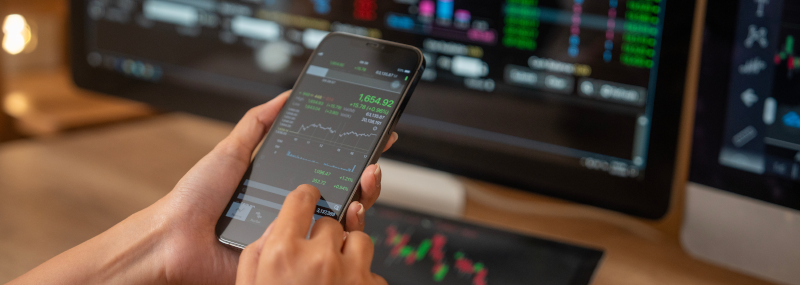A common criticism of some proof of work cryptocurrencies is that they may not be practical for everyday transactions. Critics contend that their processing times are too slow and their fees are too high to be used to buy coffee or pay for groceries.
As a result, a plethora of cryptocurrencies have been created to try to fill this gap. One of the oldest in this category is litecoin. Let’s explore how it works.
What is Litecoin?
Litecoin is a cryptocurrency created by computer scientist Charlie Lee, who modeled it after Bitcoin’s source code. The Litecoin network launched in October 2011, nearly 3 years after Bitcoin went live.
How does Litecoin work?
Litecoin aims to be a leaner, faster version of Bitcoin. Like its inspiration, it’s a peer-to-peer network, which means users can send litecoin directly to other users without a third-party intermediary. It also runs on a decentralized proof of work blockchain that’s verified and updated by independent individuals around the world.
The maximum supply of litecoin is capped at 84 million litecoins. New blocks are added to its blockchain via an algorithm called Scrypt, which allows it to process transactions in roughly 2.5 minutes.
In 2022, the Litecoin network launched a unique feature called MimbleWimble Extension Blocks (MWEB for short). For many cryptocurrencies, sending someone a payment means anyone can see the amount of crypto in both the sender and receiver’s crypto address. Litecoin’s MWEB makes it so that only the sender and receiver can see this information.
How is litecoin mined?
Litecoin is mined via a proof of work system. Its blockchain is updated by independently-owned computers from all around the world. Each batch of transactions is added to the blockchain by one computer (i.e., miner), which is chosen via a competition that involves solving a complex puzzle.
What is the Litecoin halving?
Like Bitcoin, Litecoin also has a programmed halving that occurs roughly every 4 years. Litecoin halvings cut the amount of mining rewards in half each time 840,000 blocks have been mined. The goal is to slow the rate at which new litecoins are released into circulation in hopes of preventing inflation.
Potential advantages of litecoin vs. bitcoin and other cryptocurrencies
For supporters, the Litecoin network’s most obvious advantage may be its relative speed. Overall, Litecoin is conceptually similar to Bitcoin, but with minor differences. For example, instead of Bitcoin’s 21 million max supply, litecoin’s is set at 84 million. And instead of programming a halving every 210,000 blocks, Litecoin’s is set at 840,000 blocks.
The more stark difference is in processing speeds. Whereas Bitcoin transactions can take roughly 10 minutes to process, Litecoin can process transactions in roughly 2 and a half minutes. Its transactions fees are also a lot lower on average. Supporters argue that this efficiency enables it to better fulfill Bitcoin’s vision as a transactional currency. Skeptics, however, note that it’s still slower compared to other cryptocurrencies, which will discuss later on.
Another potential advantage is its privacy consciousness. The implementation of MWEB attempts to protect user information to a greater degree compared to other cryptocurrencies. Supporters believe this feature will help attract more investors in the long run.
Potential disadvantages of litecoin
Skeptics argue the Litecoin network’s prioritization of speed sacrifices security. Proof of work blockchains typically achieve greater speed by making mining puzzles less complex. Critics say this introduces cybersecurity concerns. For example, less complex mining puzzles means less energy is required to solve them. Lower energy requirements mean it’s potentially cheaper for a bad actor to control a majority of the mining power and take over the blockchain.
Also, despite its aspirations to be used as a faster, cheaper version of Bitcoin, the Litecoin network has yet to gain widespread interest. As of early May 2024, litecoin boasts a market cap of roughly $6 billion, while Bitcoin’s is over $1 trillion. Bitcoin has also seen interest from larger financial institutions and even some world governments, whereas the litecoin brand is more known among niche cryptocurrency enthusiasts.
2 potential causes:
- Both bitcoin and litecoin are intended to be used as mediums of exchange. But in practice, litecoin is currently more commonly used as a medium of exchange, while bitcoin is more commonly used as a store of value. Users who make transactions in litecoin often convert their holdings to bitcoin for long-term investment purposes.
- There are other cryptocurrencies that can process transactions even faster. Litecoin transactions take 2.5 minutes on average, but other networks can get the job done in just seconds.
What to consider before buying litecoin
Those thinking about buying litecoin should carefully weigh potential advantages against its potential disadvantages. While litecoin has enjoyed longevity as a bitcoin alternative, it also currently experiences slower processing times compared to many other non-Bitcoin cryptocurrencies and has not currently achieved the same level of adoption.
In general, remember that litecoin and other cryptocurrencies are highly volatile, and may be more susceptible to market manipulation than securities. Moreover, crypto holders do not benefit from the same regulatory protections applicable to registered securities, and the future regulatory environment for crypto is currently uncertain. Crypto is not insured by the Federal Deposit Insurance Corporation or the Securities Investor Protection Corporation, meaning you should only buy crypto with an amount you’re willing to lose.


